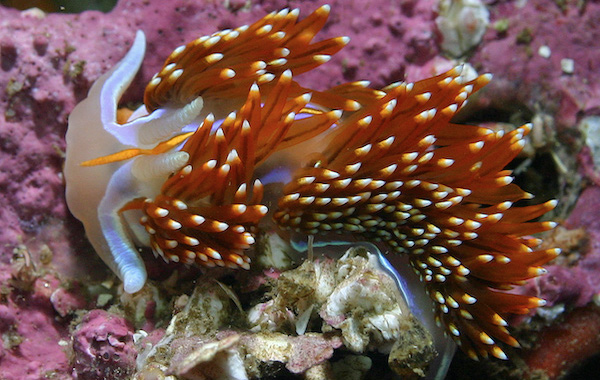Species Spotlight: Opalescent Nudibranch

Did you know that the opalescent nudibranch (Hermissenda opalescens) is a carnivorous creature? This tiny colorful sea slug feeds on small invertebrates, particularly hydroids and sea anemones. It has a specialized feeding apparatus located on its head, known as a radula, which is equipped with rows of tiny teeth. The nudibranch uses its radula to scrape and devour its prey, extracting nutrients from its chosen food sources.
The opalescent nudibranch is a species of mollusc most known for its stunning visual display. Its vibrant colors serve multiple purposes. They act as a form of camouflage, blending the nudibranch with its surroundings and making it harder for predators to spot. Additionally, the bright hues serve as a warning signal to potential predators, indicating that the nudibranch may be distasteful or even toxic.
This captivating species can be found along the western coast of North America, from Alaska to Baja California, including in Greater Farallones National Marine Sanctuary, Cordell Bank National Marine Sanctuary, and other west coast sanctuaries. It thrives in a variety of habitats, including intertidal zones, rocky reefs, and kelp forests; and often encountered in areas with abundant food sources and suitable conditions for reproduction.
The opalescent nudibranch is a hermaphroditic species, meaning each individual possesses both male and female reproductive organs. During mating, two nudibranchs will exchange sperm, fertilizing each other’s eggs internally. Afterward, each nudibranch will lay a gelatinous ribbon of eggs, which is carefully attached to a suitable substrate. The eggs develop over time until they hatch into tiny larvae, eventually transforming into fully formed nudibranchs.
The opalescent nudibranch is an incredible species that students may be lucky to see with our education programs such as LiMPETS!
Learn more about sea life in the Sanctuaries.
Photo credit: Steve Lonhart, NOAA MBNMS.

